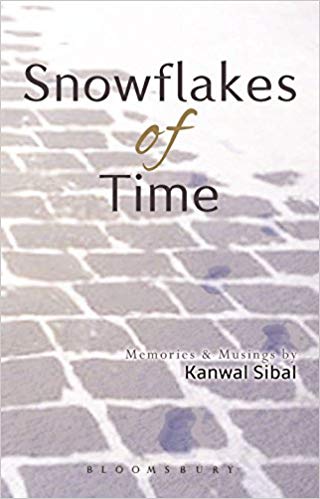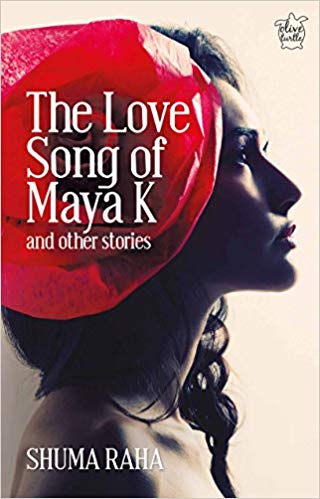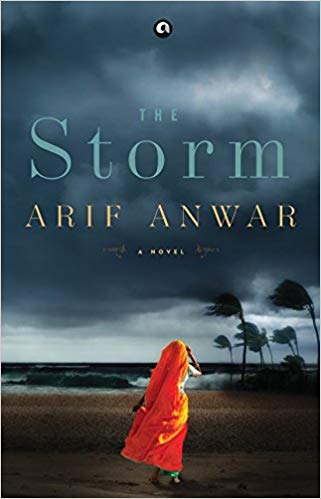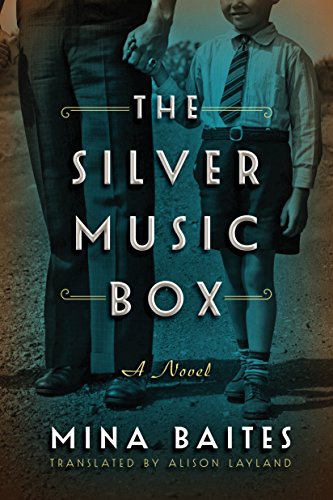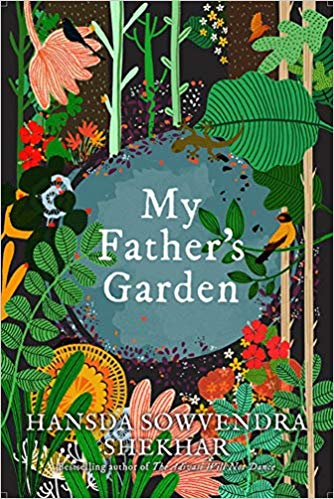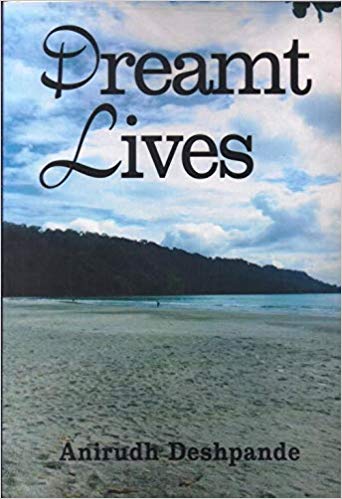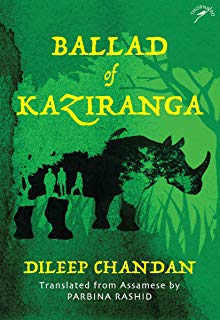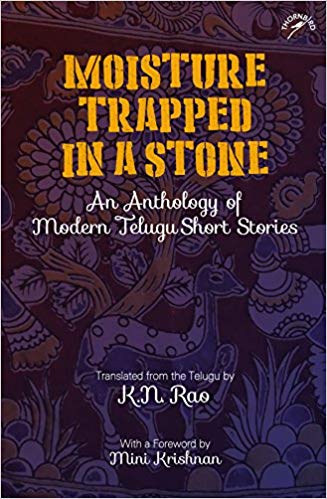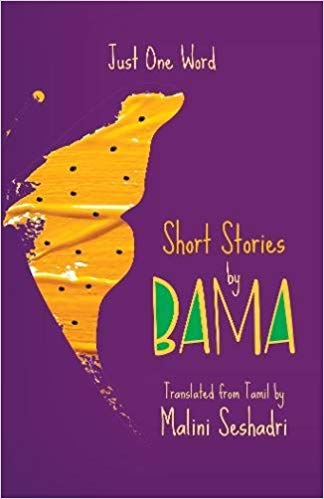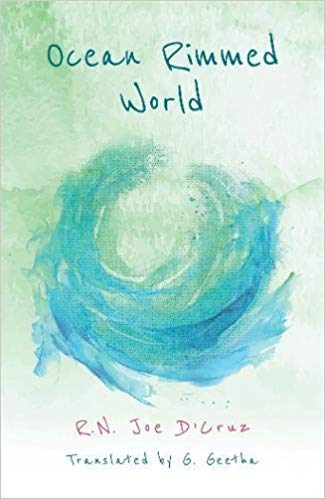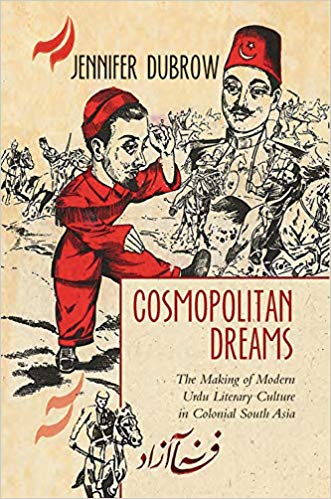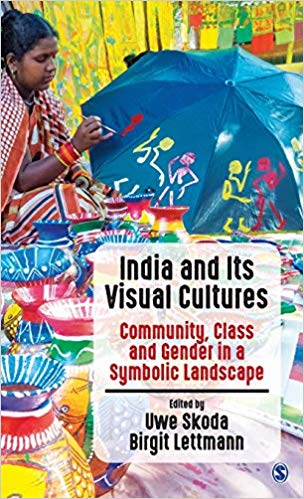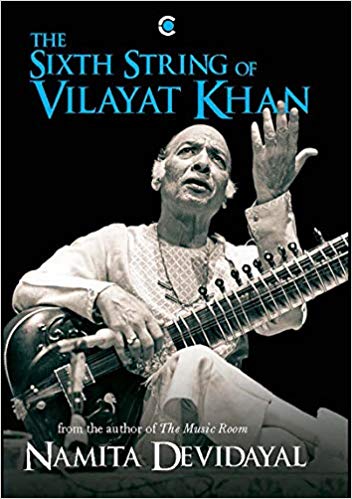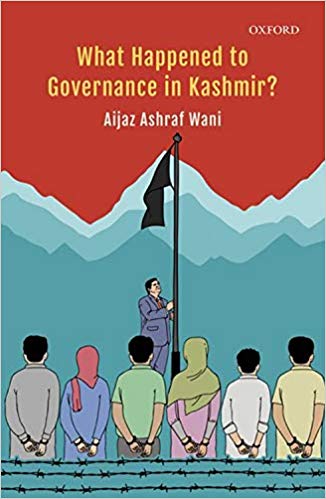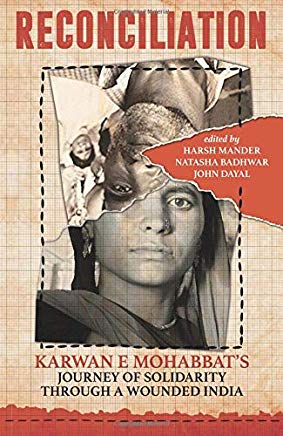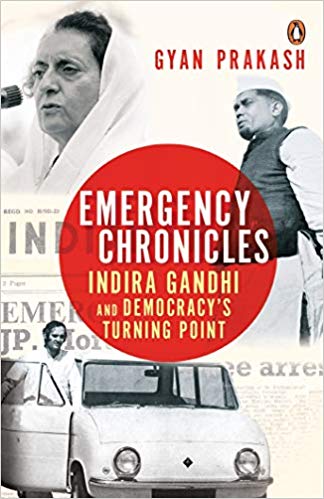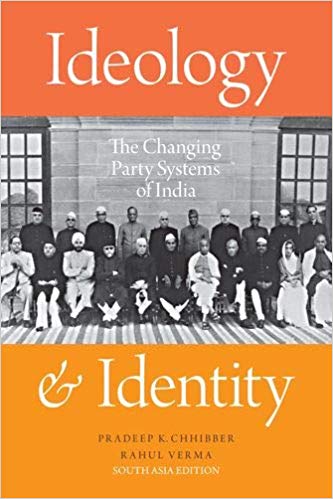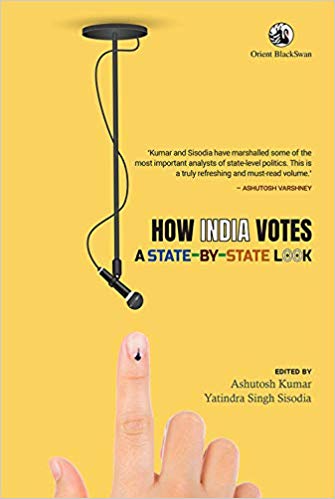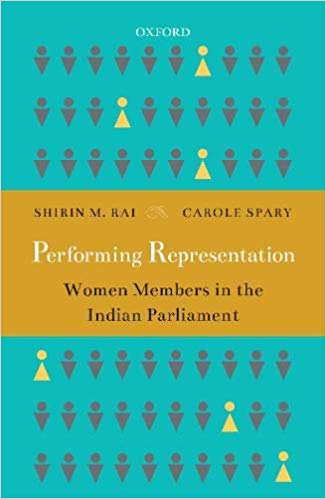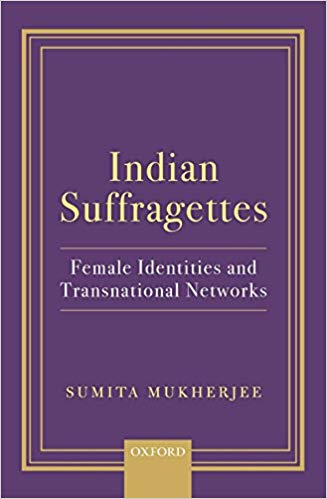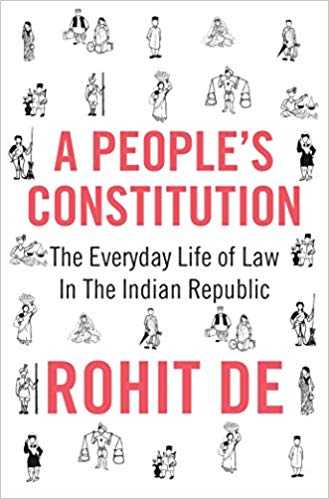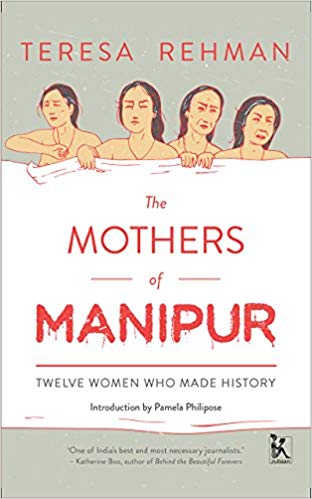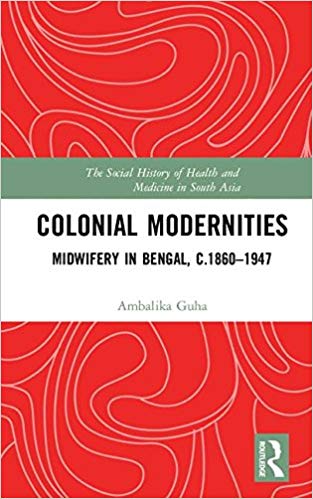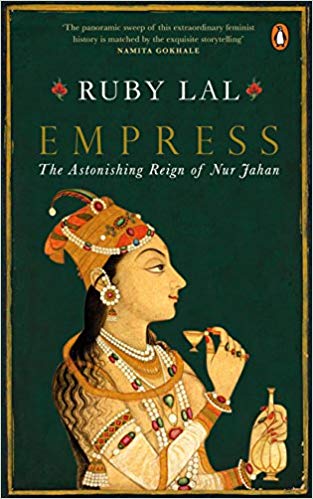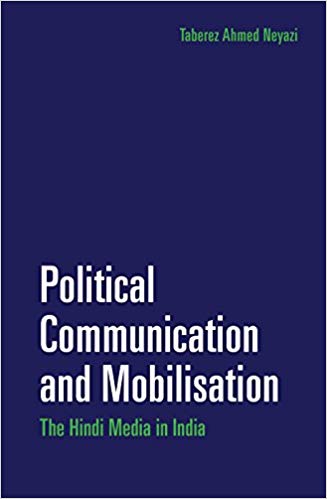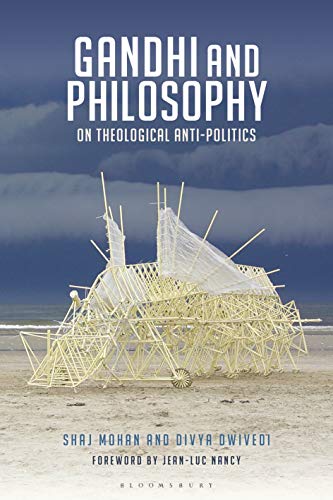Snowflakes of Time is a collection of about a hundred poems divided into eight sections, presumably to separate them by themes. The author is a former Foreign Secretary of India. The compartments are not watertight. The sadness of ‘Time passed’ and ‘What might have been’ runs through a good number of poems in different sections. Also what the writer calls his communion with nature.
Archives
April 2019 . VOLUME 43, NUMBER 4Translation in poetry becomes essential not only for bringing a work to a wider audience but to begin a literary and a cultural discussion. This is where the role of a translator becomes an important one—serving as a bridge between the poet writing in his/her language and a reader who will read it in another language. It is extremely difficult to transport the cultural and the literary baggage of one language and load it onto another.
Short story writing is not everybody’s forte. The author has to do a tightrope walk while trying to say so much in so little. This genre, which is increasingly getting popular along with other extreme variants like flash fiction and micro fiction is undoubtedly a reflection of our busy times. Shuma Raha’s book makes up a fascinating and enjoyable series of 13 short stories about ordinary men and women.
2018
‘The interior is ten paces on each side. At the far end, dimly lit by the hole-ridden roof, is a fiercely beautiful woman. Tall, with midnight skin, she wears a garland of severed heads, a skirt of limbs. Her rolling tongue reaches beyond her chin to point to the vanquished demon she tramples underfoot.
For a historical novel purportedly attempting to tell an intergenerational, transnational tale of the fortunes of a German Jewish family torn apart by the two world wars and the Holocaust, The Silver Music Box by Mina Baites, it must be admitted at the outset, disappoints sorely.
Hansda Sowvendra Shekhar’s My Father’s Garden, advertised on the jacket as the latest of ‘a major talent of Indian fiction writing at the top of his form’, is supposed to be the biography of a young doctor. It spans half his life, narrating his negotiation of ‘love and sexuality, his need for companionship, and the burden of memory and familial expectation’.
2018
Dreamt Lives by Anirudh Deshpande, a historian of modern South Asian history, represents an attempt by the author to transcend his field of expertise which is based on sources, referencing and corroboration to a space quite the opposite of it: fiction. History and literature as disciplines, historically, have an uneasy relationship as under the postmodernist impulse the former was reduced and ridiculed to be fiction of the historian’s imagination…
Vasanth Kannabiran’s book offers a rich and rewarding reading experience. The writer intended each of the five pieces to be ‘shaped into music and dance’, in order to be performed as ballets in the Bharatanatyam tradition. But they also merit their own rightful place as works of literature.
2018
Kaziranga! The very name spells magic. Deep dark forests, filtered emerald-green sunlight, large acres of open grassland, swamps and wetland, and thousands of animals and birds coexisting in celebration of the splendid glory of nature. Spread across over 400 sq km, Kaziranga is home to several protected species of animals: among them the tiger (its largest concentration in the world is found here), the wild elephants, the water buffalo, the swamp deer, many species of birds, and most famously, two-thirds of the world’s one-horned rhino population.
The problem with a multicultural and multilingual nation like India is that most of the time we are alien to the works published in the different bhasha literatures other than our own mother tongue. Thus the link language becomes English and the only way to savour the rich heritage of our regional fiction is through translation.
The Tamil Dalit woman writer Bama has been a phenomenal name in the contemporary Dalit literary terrain. Widely celebrated for her life-writing Karukku (which completed its 25th year of publication in December 2017), her recently published book Just One Word, a compilation of fifteen short stories translated from Tamil into English by Malini Seshadri heralds a new chapter in her literary life.
Ocean Rimmed World by Joe D’Cruz, ably translated by G Geetha, is the story of a way of life. True, it is an insider’s account tracing life as it was lived in a Tamil Catholic fishing community of Parathavars in Uvari, a village near Thoothukudi. But its sweep and depth is a tribute to the way people lived as communities barely a few generations ago.
The arrival of commercial print in the 19th century, across the subcontinent allowed for the emergence of the professional writer, one who could make a living from writing alone. Where professional poets and writers had earlier subsisted on patronage from kings and nobles, the 19th century created opportunities for a writer to make a living from the market.
This volume edited by Uwe Skoda and Birgit Lettmann is a significant contribution to understanding the visual media. It moves away from the approach taken by Gayatri Sinha in a previous book published in 2009 called Art and Visual Culture in India, 1857-2007 which primarily located visual culture within art and art history. Skoda and Lettmann’s edited volume…
Three great sitarists blossoming in the second half of the last century—Ravi Shankar, Vilayat Khan and Nikhil Banerjee—enriched our instrumental music tradition decisively. Their personalities, largely shaped by their background and upbringing, were very different, as was their impact on the public psyche, at national and international levels. But for his untimely death, Nikhil Banerjee would have also had a much wider audience and perhaps been as acclaimed as the other two.
The Kashmir conflict, since the beginning, has posed many challenges to the Indian state and the narrative it propounds. Even though experts and academics have often tried to focus on the security dimension of the conflict, the failure to link governance with conflict has not received much attention. It is taken as a given that governance will take a lead once the security dimensions are resolved. Security gets prominence over governance then.
This volume is a slightly rushed attempt at collecting the findings about the lynching, hate crimes and rise of cow vigilantes that have stormed the news in India over the last few years. It details the violence that has surged against Muslims, Dalits and other lower castes. While doing so, many writers take pains to establish the even more vulnerable position of women, children and the aged belonging to these backgrounds and families.
Emergency Chronicles fills a void among the available scholarly works covering the period of what was an ‘aberration’ in Indian politics. In this riveting work of impressive archival research, Gyan Prakash lifts the curtain from the evolutionary sequencing of events leading to June 1975—the day Emergency came into force—and uncovers the everyday governing apparatus of a then proto fascist—if not a full blown fascist-government…
Party politics in India has often been characterized by observers as being patronage-based, chaotic and opportunistic, driven largely by interests of office seeking politicians rather than ideology. This in turn is assumed to have led to corruption, rent-seeking and clientelistic behaviour rather than broad-based programmatic delivery of public goods. Literature also refers to Indian politicians adopting particularistic appeals based on voters’ identity such as caste…
The historian Ramchandra Guha had once observed that two of the things that keep India together are cricket and Bollywood. If one were to think of a third unifying element it would undoubtedly be the national election. However, despite its pan-India appeal and its consistency in attracting wide public participation, it is surprising that the national election in India has not received the kind of nuanced attention that it deserves.
The book under review may appear as an ambitious project. What the authors attempt to address here is the complex puzzle of Indian democracy through their multi-modal enquiries into questions of gender and representation. True to their ambitions, these worthwhile attempts have led to a distinct contribution to the contemporary debates on gender and politics in India and elsewhere.
The suffrage movement marks a watershed in the history of women’s movements and continues to inspire feminist contestations across the world. However, all forms of delineations and depictions on the suffrage movement, whether in academia or popular culture, exclusively focus on the role and struggles of the women in the West. In her extensively researched work, Indian Suffragettes…
Way back in 1985, I got a call from an agitated lawyer friend. He wanted me to mobilize opinion against the newly passed Administrative Tribunals Act, which took away the jurisdiction of the Supreme Court and the High Courts over service disputes of public servants, and vested it in administrative tribunals. The power of constitutional courts was being handed over to statutory tribunals, which did not even need to have judicial members on the bench.
Rehman’s book aims to document the landmark event of the Kangla protest, as well as its political and personal aftermath, through the voices of the twelve Manipuri women who took part in it. It is true that the twelve activists, otherwise known as the twelve imas (meaning ‘mothers’ in the Manipuri language), have spoken numerous times and at length to journalists, researchers and scholars about their experiences in the years following 2004.
Ambalika Guha has produced an excellent study on the powerful interplay between colonialism, nationalism, modernity, medicine and midwifery in colonial Bengal (c. 1860-1947). Unlike the dominant scholarship in the field, Guha emphasizes the roles that both male and female doctors, and not female doctors alone, played at the pedagogic and interventionist levels respectively in the development of midwifery and obstetrics in Bengal…
2018
Asar-us-Sanadid, variously translated as ‘The Remnant Signs of Ancient Heroes’, ‘Vestiges of the Past’ or ‘Traces of the Notables’, is a book on pre-1857 Delhi, its main buildings, monuments and people, written by Sayyid Ahmad Khan. Two versions of the book were published, one in 1847, and the second in 1854. A third version was perhaps in the works, but for the Uprising. Asar-us-Sanadid, today, is a canonical text, but even when it was published it was considered most impressive for its contribution to the knowledge of the history and archaeology of Delhi.
Empress :The Astonishing Reign of Nur Jahan comes after a host of other works by Ruby Lal on themes such as domesticity, women’s writing, harem, imperial household and so on in pre-colonial South Asia. Her previous book, Domesticity and Power in the Early Mughal World (2005) opened up new vistas of looking at the Mughal harem, domestic space, and the feminine world, through the prism of power.
Taberez Neyazi’s new book is a welcome addition to the literature on India’s rapidly changing world of media by one of its most enterprising scholars of communication. Centred around Neyazi’s PhD thesis submitted to the National University of Singapore in 2009, the book stretches well beyond the confines of a thesis to suggest how media have played a ‘catalytic role as mobilising agents in the ongoing democratic transformation of India’ (p. 4).
The collected writings of MK Gandhi stretch over a 100 volumes. Prolific even for prolific writers, but for someone so politically active, this is not just phenomenal but incredibly so. Further, there are as many and more volumes about Gandhi’s life and thought, nor does there seem to be an immediate end to the discussion, debate and appropriation that Gandhi is subject to.

